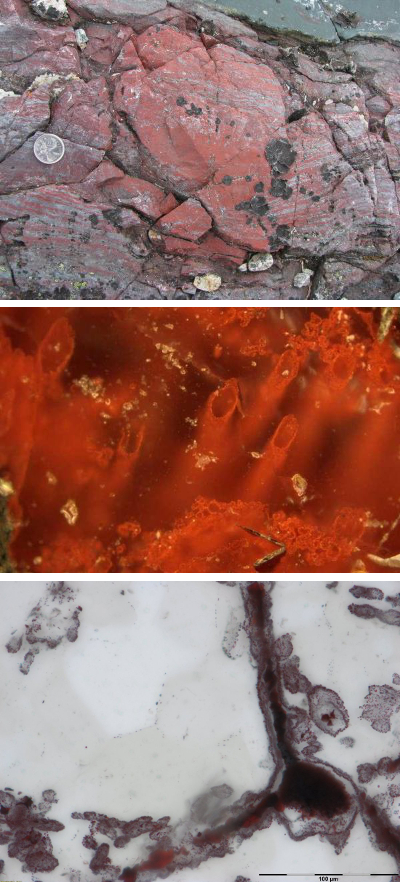Oldest fossils uncovered
 Researchers have found direct evidence some of the oldest life on Earth, dating back over 3.7 billion years.
Researchers have found direct evidence some of the oldest life on Earth, dating back over 3.7 billion years.
Tiny shapes formed by bacteria that lived on iron have been found encased in quartz layers in the Nuvvuagittuq Supracrustal Belt (NSB) in Quebec, Canada.
The NSB contains rocks that formed part of an iron-rich deep-sea hydrothermal vent system that provided a habitat for Earth’s first life forms between 3,770 and 4,300 million years ago.
University of Western Australia’s Adjunct Professor Franco Pirajno was a key player in the discovery, contributing his geological knowledge of the 1.8 billion-year-old Earaheedy Basin in WA.
The discovery supports the idea that life emerged from hot, seafloor vents shortly after planet Earth formed.
The haematite structures have the same characteristic branching of iron-oxidising bacteria found near other hydrothermal vents today.
Additionally, they were found alongside graphite and minerals like apatite and carbonate, which are found in biological matter including bones and teeth and are frequently associated with fossils.
British researcher Matthew Dodd said the discoveries demonstrated life developed on Earth at a time when Mars and Earth had liquid water at their surfaces, posing exciting questions for extra-terrestrial life.
“Therefore, we expect to find evidence for past life on Mars 4,000 million years ago, or if not, Earth may have been a special exception,” he said








 Print
Print